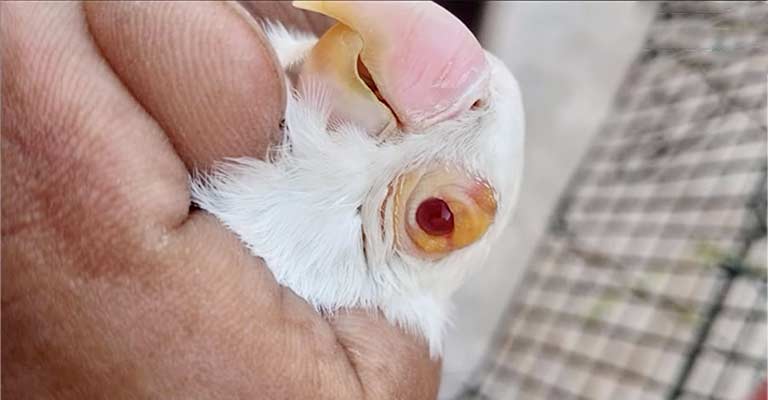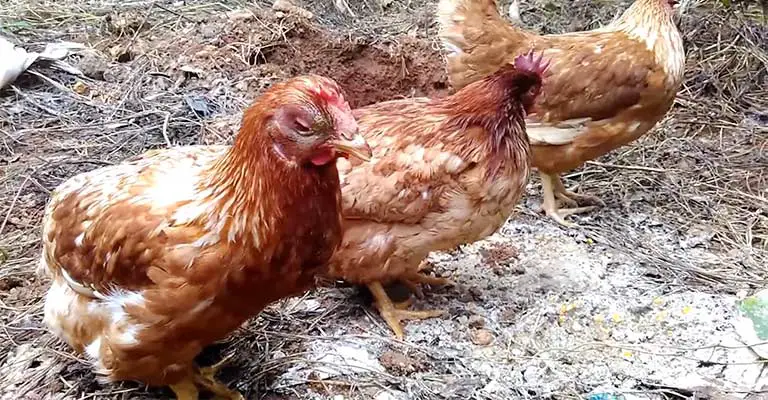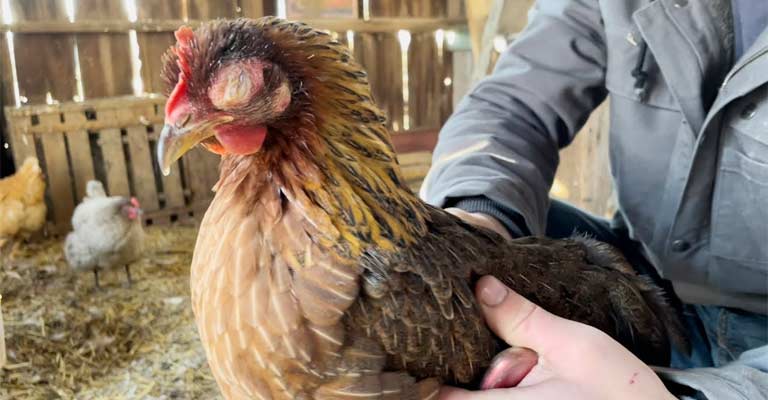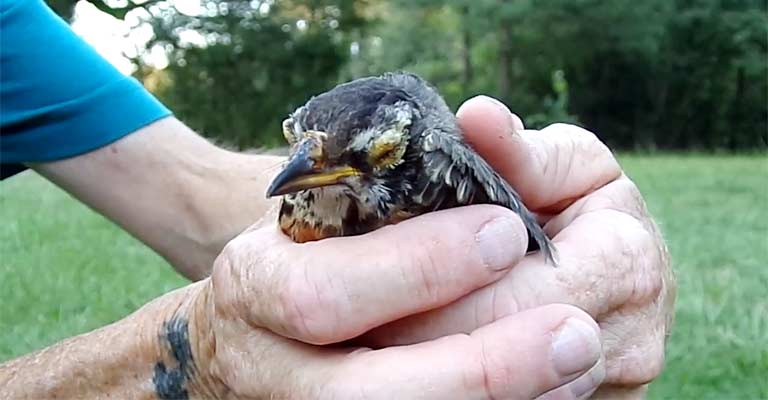In the avian realm, the specter of herpesvirus infection casts a shadow over feathered populations, posing both ecological and veterinary challenges.
Herpesviruses, a family of enveloped DNA viruses, have been identified as significant pathogens affecting a diverse array of bird species worldwide.
As carriers of this viral menace, birds face a range of consequences, from subtle physiological disturbances to severe clinical manifestations.
Understanding the dynamics of herpesvirus infections in birds is crucial for mitigating their impact on avian health and conserving vulnerable species.
This review delves into the intricacies of herpesvirus infection in birds, exploring the mechanisms of infection, transmission dynamics, and the potential consequences for individual birds and populations.
Through a comprehensive examination of current research, we aim to shed light on the complexities of herpesvirus infections in birds, providing a foundation for future studies and strategies aimed at safeguarding avian well-being.

Herpesvirus Infection in Birds: Unraveling Avian Health Challenges
Herpesviruses are a group of DNA viruses enveloped in a lipid membrane, known for their ability to infect a wide range of hosts, including birds.
Among the avian herpesviruses, several genera, such as Marek’s disease virus (MDV), infectious laryngotracheitis virus (ILTV), and Psittacid herpesvirus (PsHV), have been identified as significant pathogens.
These viruses exhibit varying degrees of host specificity and can cause diseases ranging from mild respiratory infections to severe, often fatal, conditions.
Mechanisms of Herpesvirus Infection
The journey of herpesvirus infection in birds begins with the entry of the virus into the host cells. This process involves a complex interplay between viral envelope glycoproteins and host cell receptors.
Once inside the host, the virus undergoes replication, leading to the production of new viral particles. The ability of herpesviruses to establish latent infections further complicates the scenario, allowing the virus to persist within the host for extended periods, sometimes for the lifetime of the bird.
Transmission Dynamics and Spread
Understanding the transmission dynamics of herpesviruses is crucial for managing and controlling infections in bird populations.
Herpesviruses in birds can be transmitted horizontally through direct contact, respiratory secretions, and contaminated environments.
Vertical transmission from parent to offspring is also documented in certain cases. The ability of these viruses to persist in the environment adds a layer of complexity, making prevention and control challenging.
Clinical Manifestations and Impact on Birds

The clinical manifestations of herpesvirus infections in birds vary widely and depend on factors such as the specific virus, host species, and environmental conditions.
Some infections result in respiratory distress, conjunctivitis, and lesions in various organs, while others may remain asymptomatic. In cases where clinical signs are absent, infected birds can still serve as carriers, contributing to the silent spread of the virus within populations.
Severe disease outcomes, such as paralysis and immunosuppression, are observed in certain herpesvirus infections, posing a significant threat to affected bird species.
Ecological Implications and Conservation Challenges
The impact of herpesvirus infections on avian ecosystems extends beyond individual health. Outbreaks can lead to population declines, particularly in vulnerable or endangered species.
The disruption of natural behaviors, such as breeding and migration, further complicates conservation efforts. As these infections often occur in wild as well as captive bird populations, effective strategies for disease management must be tailored to the unique characteristics of each environment.
Mitigation Strategies and Future Directions
Efforts to mitigate the impact of herpesvirus infections in birds involve a combination of preventive measures, diagnostics, and targeted interventions.
Vaccination has proven effective in managing certain herpesvirus infections, offering a viable strategy for reducing the prevalence and severity of diseases.
Ongoing research focuses on developing new vaccines, understanding host-pathogen interactions, and refining diagnostic tools to enable early detection and response.
What Is the Most Common Herpesvirus in Birds?

Herpesviruses constitute a diverse family of DNA viruses, with members infecting various animal species, including humans. Among the plethora of herpesviruses, one stands out as particularly ubiquitous and prevalent across the globe—Herpes Simplex Virus (HSV).
This article explores the characteristics, transmission, clinical manifestations, and complex nature of HSV infections, shedding light on why it holds the title of the most common herpesvirus.
Overview of Herpes Simplex Virus (HSV)
HSV belongs to the Alphaherpesvirinae subfamily and is categorized into two serotypes: HSV-1 and HSV-2. While both serotypes can cause similar clinical manifestations, they are traditionally associated with different anatomical sites.
HSV-1 is primarily linked to oral infections, including cold sores, whereas HSV-2 is commonly associated with genital infections. However, the line between these distinctions is becoming increasingly blurred, as both serotypes can infect both oral and genital regions.
Transmission Dynamics
HSV is notorious for its ease of transmission, contributing to its status as the most common herpesvirus. Transmission occurs through direct contact with infected lesions or mucosal surfaces during active outbreaks.
However, it is important to note that viral shedding can occur even in the absence of visible symptoms, adding an element of stealth to its spread. Additionally, HSV can be transmitted vertically from the mother to the neonate during childbirth, posing a risk of severe complications for the newborn.
Global Prevalence and Incidence
The global prevalence of HSV infections is staggering, with billions of people estimated to be infected worldwide. HSV-1 is more prevalent globally, affecting a majority of the population, often acquired in childhood through non-sexual contact.
HSV-2, associated with genital herpes, is primarily sexually transmitted and has a lower but still substantial global prevalence. Factors such as socioeconomic status, age, and geographic location contribute to variations in prevalence rates.
Clinical Manifestations

HSV infections can manifest as oral or genital lesions, with the severity and frequency of outbreaks varying among individuals. Initial infections are often more symptomatic, with fever, malaise, and painful sores.
After the primary infection, the virus establishes latency in the sensory ganglia, periodically reactivating and causing recurrent outbreaks. Some individuals may experience asymptomatic viral shedding, unknowingly transmitting the virus to others.
Complications and Associated Conditions
While HSV infections are generally self-limiting, complications can arise, particularly in immunocompromised individuals.
Herpetic encephalitis, a rare but severe condition affecting the central nervous system, is one such complication. Moreover, HSV infections increase the risk of acquiring and transmitting other sexually transmitted infections, highlighting the interconnectedness of infectious diseases.
Diagnosis and Treatment
Diagnosing HSV infections involves clinical evaluation, viral culture, and molecular tests such as polymerase chain reaction (PCR). Antiviral medications, such as acyclovir, valacyclovir, and famciclovir, are the mainstay of treatment.
While these medications can reduce the severity and duration of symptoms, they do not cure the infection, and the virus persists in a latent state.
Prevention Strategies
Preventing HSV transmission requires a multifaceted approach. Education about the virus, safe sex practices, and awareness of one’s infection status are crucial components.
Vaccines are currently in development, with some promising results in clinical trials. However, achieving widespread immunity remains a challenge due to the complex nature of the virus and the presence of multiple viral serotypes.
Psychosocial Impact
Beyond the physical symptoms, HSV infections can have a significant psychosocial impact on individuals. Stigma, fear of rejection, and anxiety about transmitting the virus to partners can lead to emotional distress.
Support networks, counseling, and education play pivotal roles in addressing the psychological aspects of living with HSV.
What Is Herpesvirus In Animals?

Herpesviruses are a family of double-stranded DNA viruses known for their ability to infect a wide range of vertebrate hosts, including mammals, birds, reptiles, and fish.
These viruses are characterized by their ability to establish lifelong infections, alternating between periods of latency and active replication.
Classification and Diversity
The Herpesviridae family is divided into three subfamilies: Alphaherpesvirinae, Betaherpesvirinae, and Gammaherpesvirinae. Each subfamily comprises numerous species-specific viruses that exhibit varying host tropisms and clinical manifestations.
Alphaherpesviruses often cause acute, lytic infections, Betaherpesviruses establish persistent infections with slow replication, and Gammaherpesviruses are associated with latent infections and lymphoproliferative disorders.
Transmission and Spread
Herpesviruses in animals are typically spread through direct contact with infected individuals, contact with contaminated secretions, or exposure to environmental sources carrying the virus.
Transmission dynamics vary between species, influenced by factors such as host behavior, population density, and environmental conditions. In some cases, vertical transmission from parent to offspring may also contribute to the spread of these viruses.
Clinical Manifestations
The clinical manifestations of herpesvirus infections in animals are diverse, ranging from mild or asymptomatic cases to severe, life-threatening diseases. In domestic animals, herpesviruses are often associated with respiratory, reproductive, and neurological disorders.
For example, Equine Herpesvirus (EHV) can cause respiratory disease and abortion in horses, while Bovine Herpesvirus (BHV) is linked to respiratory and reproductive issues in cattle.
Latency and Reactivation
One of the defining features of herpesviruses is their ability to establish latency, wherein the viral genome persists within the host’s cells without active replication. During latency, the virus evades the host immune system, providing a reservoir for potential reactivation.
Factors such as stress, immunosuppression, or other concurrent illnesses can trigger reactivation, leading to recurrent outbreaks and shedding of infectious viruses.
Impact on Wildlife Conservation
In wildlife, herpesvirus infections can have profound implications for conservation efforts. The transmission of these viruses between domestic and wild animals poses a risk to vulnerable species, particularly when they share habitats.
The disruption of natural behaviors, such as mating and foraging, can further compound the impact of herpesvirus infections on wildlife populations.
Prevention and Control
Preventing and controlling herpesvirus infections in animals requires a multifaceted approach. Vaccination is a key strategy in managing infections in domestic animals, although developing effective vaccines for wildlife presents unique challenges.
Biosecurity measures, quarantine protocols, and enhanced surveillance are essential tools for limiting the spread of herpesviruses in captive and domestic animal populations.
FAQs
What are the common signs of Herpesvirus infection in birds?
Herpesvirus infections in birds can manifest in various ways, with clinical signs ranging from mild to severe. Common symptoms include respiratory distress, conjunctivitis, lesions in various organs, and some cases, neurological issues.
How is Herpesvirus in birds transmitted, and what are the main routes of transmission?
Transmission of Herpesvirus in birds occurs through both horizontal and vertical routes. Horizontal transmission involves direct contact with infected individuals, respiratory secretions, and contaminated environments.
Are all bird species equally susceptible to Herpesvirus infections?
Different bird species exhibit varying degrees of susceptibility to Herpesvirus infections. Some species may be more resilient or asymptomatic carriers, while others can experience severe clinical manifestations.
How can Herpesvirus infections impact bird populations and ecosystems?
Herpesvirus infections can have significant implications for bird populations and ecosystems. Outbreaks may lead to population declines, disrupt breeding cycles, and affect migration patterns. In endangered or vulnerable species, the impact can be particularly severe.
What preventive measures and interventions are available to manage Herpesvirus infections in birds?
Preventing and managing Herpesvirus infections in birds involves a combination of strategies. Vaccination, when available, is a key tool in reducing the severity and spread of infections.
Conclusion
The study of herpesvirus infection in birds unveils a complex web of interactions that extend beyond the individual host to impact entire avian populations.
From the intricate molecular mechanisms governing viral replication to the ecological implications of infection spread, our exploration has highlighted the multifaceted nature of this avian affliction.
As we navigate the intricacies of herpesvirus infections in birds, it becomes evident that a holistic approach is essential for effective conservation and disease management.
Furthermore, the knowledge gained from this research serves as a foundation for the development of targeted interventions and vaccination programs, offering hope for the protection and preservation of our feathered companions.
In the face of this viral challenge, ongoing dedication to understanding and combating herpesvirus infections in birds is not only a scientific imperative but also a crucial step toward ensuring the resilience and sustainability of avian ecosystems in the years to come.